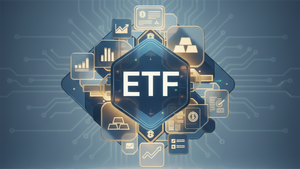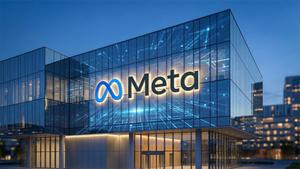
The pharmaceutical industry is witnessing an unprecedented showdown as Eli Lilly (NYSE: LLY) rapidly encroaches upon Novo Nordisk's (NYSE: NVO) long-held lead in the burgeoning GLP-1 (glucagon-like peptide-1) market. This fierce competition, fueled by blockbuster drugs for diabetes and weight loss, is not merely a corporate rivalry; it's a pivotal moment that is redefining metabolic disease treatment, accelerating innovation, and poised to reshape global public health. With market projections soaring into the hundreds of billions, the stakes for both companies, healthcare systems, and millions of patients worldwide could not be higher.
The Epicenter of Innovation: Dual-Action vs. Established Power
The intensity of this market battle stems from the profound efficacy of GLP-1 receptor agonists, which mimic natural hormones to regulate blood sugar, slow digestion, and reduce appetite. Novo Nordisk, the historical frontrunner, built its formidable position on semaglutide, the active ingredient in its flagship products: Ozempic (for type 2 diabetes), Wegovy (for chronic weight management), and Rybelsus (the pioneering oral formulation for type 2 diabetes). These drugs have revolutionized treatment, offering significant benefits beyond glycemic control, including cardiovascular risk reduction. Novo Nordisk reported a global volume market share of 63% in the GLP-1 segment in 2024, maintaining a strong 71% international dominance outside the U.S.
However, Eli Lilly has engineered a dramatic shift with its dual GLP-1 and GIP (glucose-dependent insulinotropic polypeptide) receptor agonist, tirzepatide, marketed as Mounjaro (for type 2 diabetes) and Zepbound (for chronic weight management). This dual-action mechanism has demonstrated superior weight loss results in some trials, with patients losing up to 21% of body weight, surpassing the approximately 15% seen with semaglutide. This efficacy has translated into rapid market capture, particularly in the U.S., where Eli Lilly's GLP-1 market share surged to 53% in Q1 2025, reaching 57% in Q2 2025, effectively dethroning Novo Nordisk from its domestic perch. Zepbound alone has accounted for two-thirds of all GLP-1 prescriptions for obesity in the U.S., a testament to its swift adoption. The timeline leading to this moment has been marked by a relentless pursuit of clinical superiority, expanded indications, and aggressive manufacturing scale-ups by both pharmaceutical giants, with each move scrutinizing their supply chains and commercial strategies.
The Shifting Sands of Fortune: Winners and Losers
The most obvious beneficiaries of this intensifying competition are Eli Lilly (NYSE: LLY) and Novo Nordisk (NYSE: NVO) themselves, albeit in a zero-sum game for market share. Eli Lilly is undeniably a significant winner, having capitalized on Mounjaro and Zepbound's efficacy and strategic supply management. The company's rapid ascent to U.S. market leadership underscores the power of innovation and effective commercialization. Lilly's aggressive expansion into international markets, with its president stating an intent to replicate U.S. dominance globally, positions it for continued significant revenue growth. Mounjaro alone generated over $6 billion in global sales in 2024, demonstrating its blockbuster potential.
Conversely, while Novo Nordisk (NYSE: NVO) maintains a strong global presence and significant revenue streams from its semaglutide portfolio, the loss of U.S. market share to Eli Lilly represents a substantial challenge. Early supply shortages for Wegovy created an opening that Eli Lilly deftly exploited. Despite massive investments in manufacturing, including a new $6 billion Danish facility, Novo Nordisk is now forced to aggressively innovate and defend its remaining market strongholds. Its recent strategic move to reduce its global workforce by approximately 9,000 positions, reinvesting savings into R&D and commercial initiatives, highlights the pressure to maintain competitiveness in the escalating obesity market. Other pharmaceutical companies with GLP-1 assets or those developing similar metabolic treatments, such as Amgen (NASDAQ: AMGN) or Pfizer (NYSE: PFE), also face increased pressure to differentiate their offerings as the efficacy bar for new treatments continues to rise. Companies in adjacent industries, like food and beverage or fashion, may also see indirect impacts as consumer habits potentially shift due to widespread adoption of these weight-loss medications.
Industry Tides and Broader Implications
This escalating GLP-1 rivalry is more than a commercial battle; it's a force multiplier for innovation within the pharmaceutical industry. The intense competition is driving accelerated research and development into next-generation GLP-1 agonists, dual- and potentially triple-agonists, and novel delivery methods. Both companies are heavily invested in oral formulations, with Novo Nordisk's oral semaglutide (Wegovy pill) showing promising results and Eli Lilly's investigational orforglipron demonstrating strong efficacy in trials, potentially reaching regulatory submission by late 2025 or early 2026. These developments promise improved efficacy, fewer side effects, and more convenient treatment options, significantly expanding patient access.
The market for GLP-1 drugs is projected to reach an staggering $150 billion by 2030, driven by the escalating global prevalence of obesity and type 2 diabetes. This growth necessitates substantial investments in manufacturing capacity from both players, which could eventually alleviate current supply shortages and make these life-changing treatments more widely available. Beyond weight loss and diabetes, the proven cardiovascular benefits of GLP-1s, exemplified by Novo Nordisk's Wegovy and Rybelsus receiving approvals for cardiovascular risk reduction, underscore their profound public health impact. Broader adoption could lead to significant reductions in chronic disease burden and associated healthcare costs. However, pricing and affordability remain critical concerns. With list prices around $1,000 per month, securing broad insurance coverage is a continuous challenge. The competition could eventually exert downward pressure on prices, especially as generics or more cost-effective oral formulations emerge, further shaping regulatory policies and access initiatives. Historically, similar "blockbuster" drug races, such as those in statins or biologics, have led to rapid innovation, eventual price pressures, and significant shifts in medical practice, foreshadowing the transformative potential of the current GLP-1 landscape.
The Road Ahead: Navigating a Dynamic Landscape
The immediate future of the GLP-1 market will be characterized by several critical developments. In the short term, both Eli Lilly and Novo Nordisk will continue their intense race for regulatory approvals for their oral GLP-1 candidates, oral semaglutide and orforglipron, respectively. These approvals could dramatically expand the market by offering a non-injectable option, potentially attracting a broader patient demographic. Continued investment in manufacturing scale-up will also be paramount to meet burgeoning demand and avoid the supply issues that have plagued the market. Eli Lilly's strategic delay in some Mounjaro rollouts to ensure consistent supply demonstrated a proactive approach that could serve as a model for navigating this high-demand environment.
In the long term, the competitive landscape is likely to evolve further. We can anticipate ongoing research into next-generation compounds, including potential "triple-agonists" or other novel mechanisms that offer even greater efficacy or a more favorable side-effect profile. Strategic pivots will be crucial; Novo Nordisk’s focus on R&D and commercial initiatives following workforce reductions reflects a commitment to innovation and market defense. Eli Lilly will need to sustain its momentum globally, expanding manufacturing and commercial infrastructure to meet international demand. Market opportunities will emerge for diagnostic companies, digital health platforms supporting patient adherence, and potentially even medical device manufacturers designing improved injection pens or novel drug delivery systems. Challenges will include navigating complex pricing negotiations with payers, managing public perception around long-term use and potential side effects, and ensuring equitable access. Potential scenarios range from a continued duopoly with intense competition to the emergence of a clear market leader, or even the entry of new, disruptive players.
Conclusion: A Market Remade, and What Investors Should Watch For
The GLP-1 market is undergoing a profound transformation, driven by the exhilarating and relentless competition between Eli Lilly and Novo Nordisk. Key takeaways from this dynamic period include Eli Lilly's remarkable rise to U.S. market leadership with its dual-agonist tirzepatide, challenging Novo Nordisk's established dominance built on semaglutide. This rivalry has ignited an innovation sprint, promising more effective and convenient treatments for diabetes and obesity, while simultaneously pushing both companies to make unprecedented investments in manufacturing and global expansion.
Moving forward, the market is poised for continued explosive growth, with GLP-1 drugs becoming a cornerstone of metabolic disease management. For investors, several critical factors warrant close attention in the coming months. Firstly, monitor the regulatory approvals and commercial launches of oral GLP-1 formulations from both companies, as these could significantly alter market dynamics. Secondly, track manufacturing capacity expansions and any indications of persistent supply shortages, which can swing market share. Thirdly, observe pricing strategies and evolving insurance coverage policies, as these will dictate accessibility and long-term revenue growth. Finally, keep an eye on clinical trial readouts for next-generation compounds and potential new entrants, which could introduce further disruption. The GLP-1 story is far from over; it's an evolving saga that promises to reshape healthcare and investment portfolios for years to come.






